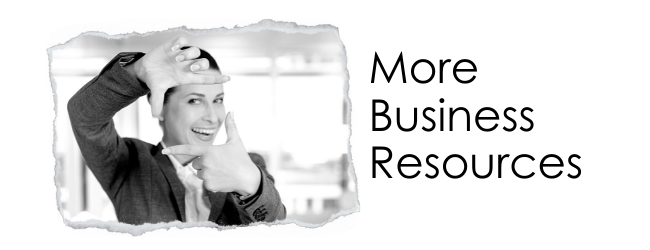
When business owners, business partners, and leaders learn to carefully frame a change for their team, group, or employees, they assume the position of role model and outline how they intend to approach the change, and how they expect others to respond and behave. This 4 Step approach to FRAME IT ensures greater success and more efficient outcomes.
Unanticipated change within your company can elicit a wide range of emotional responses in you and your team. On one end of the continuum, change is sometimes met with enthusiasm if it’s perceived as a positive. For example, if you provide increased healthcare or child care, or time off benefits, you will likely see relief, even joy, among your employees. Other types of changes however may be met with anxiety, even fear, when perceived as a threat to the status quo. This often occurs when there is a change of ownership when new leadership is brought on or there are shifts in roles and responsibilities. A third reaction to change in the work environment is a more neutral — a go with the flow, matter-of-fact, seemingly resilient response to shifts being implemented. This indicates the change is not threatening.
No matter the size of your business, owners, business partners, group leaders, and team managers are faced with many demands in the work environment. Decisions made at these times roll out a series of change events for small business teams or for multiple business groups in a large organization.
Success, for any business in transition, starts with the ability to frame a change and manage your team during a transition period.
When a change is anticipated and can be planned for chances of a smooth transition are greater, however, the current business environment is far less predictable. These uncertain times are less stable and require greater innovation, flexibility, and resilience — the ability to pivot quickly. They require you have the ability to bring many people along with you. Without this leadership capability, a group response can easily devolve into shut down, drama, or gossip — all signs of stress and anxiety. Such group behaviors eventually lead to a sense of distrust and often to dysfunctional or immature behavior. To avoid this, you need to take charge and role-model how you want to frame the change — for yourself and others.
Whether you are the CEO, manager, or group leader in charge, how YOU respond will determine how those around you will respond. Therefore it’s imperative for you to develop awareness and manage your own response to change, so you can guide others toward the successful outcomes required or desired. Your ability to do this authentically, with empathy and clarity is a huge part of leadership these days. It will grow your people and develop the shared capability to manage any change that comes at you, your team, your company.
This article will break down 4 pivotal coaching steps to help you frame a change and manage your team during a transition for the business.
- Identify and understand physiological responses to change
- As leaders and role models, first impressions matter
- 4 Steps to manage change – Learn how to Frame a Change
- Coaching Case Studies that successfully frame a change

Everyone responds to change differently. When owners, partners, and leaders acknowledge these potential responses they can ground their team and manage the change more effectively. They can frame and role model expectations for both behavior and results expected. This minimizes the derailment of a project, even a full company transition.
Understanding Physiological Responses to Change — In Yourself and Your Employees
All change is a form of stress. While a change may ultimately bring about a very positive, even exciting, outcome, it may not be perceived that way initially. It is stressful nonetheless.
Every individual’s response to stress is varied and shaped by many factors — many of which are seemingly out of control because they are physiologically and hormonally based. They are the body’s natural response to a perceived threat or danger. It began as a necessary survival response when we had to escape being eaten alive. While our current lifestyle may appear much less life-and-death survival-driven, the physiological responses to change — remain hardwired into our body system. While triggers can vary from person to person, these responses are commonly experienced as the body’s “fight, flight or freeze” responses. They may be on a continuum from a minimal response, all the way to a full-blown trauma reactivation. What triggers them varies from individual to individual and is typically shaped by early experiences. What is common is that in a nanosecond, this response system telegraphs a message to your brain/body that says: This change is a “good thing” or it’s a “bad thing.” This change is a “drama or crisis,” “something to run from” or it’s an opportunity or next step to something new.
- What may be perceived as harmful to one person may not be perceived as harmful to another.
- What may be a mild bodily-emotional response for some may be a major initial outburst for others.
Therefore it’s important to become aware that under stress, the higher brain systems in anyone can be hijacked by the body’s response to the potential for harm, the need for safety.
As a business owner or manager, you should already be able to imagine your people experiencing potential threats to workload, learning curve, performance, productivity, income, and so on. Nowadays that list frequently expands to availability of childcare, cost of healthcare, need for flexibility of schedules to care for sick or aging family members, and so on. Developing this awareness, this empathy, will make you more prepared — to not react to everyone else’s initial stress response. Rather it will prepare you to do three things:
1.) Manage your own triggers.
2.) Assist others around you in managing their responses.
3.) Keep everyone focused on achieving the desired outcomes.
Even in the most self-aware professional, the stresses of our world’s increasing change cannot help but trigger a range of emotional responses that you can learn to manage in yourself and others. As the business owner, business, or team leader, your own first response may be reactive, not proactive, emotive not managed. Unless you’ve trained your body and emotional response how to be in a calm or neutral state it’s typically an auto-response laden with emotion, often quick judgment, and always a physiological upset. There are many techniques you can learn to regulate and retrain your body’s automatic response so you are less or not reactive. Coaching can help you gain clarity of steps to take so you guide your people toward the outcomes you desire. Having the support of an expert business coach, not only skilled in the business needs but skilled in relationships and communication will help you stay real and manage with increasing confidence.
TIP: While these responses typically feel “knee-jerk,” and out of control, they can be gradually retrained or calmed over time with self-awareness and simple physically-based techniques and exercises. Identifying your own response to change, practicing self-regulation techniques and learning how role modeling works for you will be important in guiding your people to walk through change more smoothly.

The changes you hope to achieve are important. First impressions matter, so managing your own response, reflecting on the positive outcome and value of the change, getting clear about what needs to happen to achieve the goal – all of these help you as a leader to role model your expectations and guide your business team.
Take Charge of Your Physiological Responses Because First Impressions Matter
If your own first response to unexpected or uncomfortable change is a mild “fight or flight response” or at worst, an “emotional hijack,” it can lead to confusion, fear, distrust, or gossip in the people around you. It can even damage your reputation.
A paper by Dr. Relly Nadler of True North Leadership, Inc. shares cases of the worst forms of damage caused by emotional hijack. He notes that in the business world, even a four-second outburst can tarnish a leader’s career. It is what becomes chiseled in others’ minds about you.
More common is a less intense outward response. Notice if you quickly cover up a response with avoidance or lack of communication, a kind of denial anything is happening. Or it may be an outward expression — as simple as an exasperated sigh, an eye roll, a startle expression, a flare of disgust or anger. These may seem easy to overlook, deny or push under the rug, but co-workers and employees register these responses even when they may not be consciously aware of what just happened.
Begin By Grounding Yourself — and Your Team — Immediately
Don’t avoid or deny your response. As a leader, what you do and say must be authentic and congruent with what your body is saying. So self-regulation is paramount. If it’s your bodily response, it may be as simple as training yourself to pause before speaking or taking action. You might take a few deep breaths, get a drink of water, or wash your hands. If it’s a reaction of others, you might invite the individual or group to walk to a comfortable place and regroup so everyone can refocus on the matter.
I also like to coach my career and business clients to value “buying themselves some time” to pull themselves together before making a declaration of what action steps will need to be carried out. However, when buying time, it’s important to verbally inform people when you intend to give them information. For example, letting them know “I’ll call a meeting this afternoon (or tomorrow morning or at our Wednesday session) to outline our next steps…” gives you some time to prepare while also informing your team when you’ll get back to them. You buy time to ground yourself while also grounding them for the short term.
TIP: A first impression can be hard to change, unless you quickly take charge of your own response by grounding yourself and others. Adopt and practice self-regulation techniques at home and in the office so they become more second nature. Coaching can offer many ways to manage your personal physiological responses and help you develop communication options that are authentic and expand your personal and leadership style.

When you implement the 4 STEPS to FRAME IT–role modeling your approach to company change, as a business owner, manager, team, or group leader, these simple steps will give you clarity and specific skills so you feel confident in guiding your people to successful outcomes.
4 Steps to Manage Change: Lead the Outcome You Desire
We’ve established that, like it or not, your initial response to unexpected change — at home or at the office — boxes it up, VERY quickly for everyone around you. Let’s change that perspective. Let’s “re-frame it.” Instead of boxing it up, let’s talk about some specific steps you can take to FRAME IT — to frame the change for your team so you guide everyone toward the successful outcomes you desire.
Let’s assume you are practicing ways to regulate your own bodily responses to unexpected change. Now let’s talk about a 4 Step Formula to manage change and mitigate negative responses or conflict within your team.
STEP 1: Seek Clarity. Align Your Values With Desired Outcomes.
Whether this is a change you instigated or not, ask yourself: What is the positive outcome I desire? Consider the most positive outcome you desire and the company needs to be successful moving through the change.
Then look at how this change measures up to your values, or in what ways it does. When you find alignment with your core values and company cultural values, framing the change for others will come more naturally.
Once you note an initial response or outburst is having a negative or confusing impact — train yourself to calm your body first, then go directly to higher values.
Take the moment to internally regroup and return to your core values and reassess the higher goals: How you value behaving like a human being, the goals of the company or project, how people around you need to be grounded to also focus on what’s most important.
STEP 2: Step Outside Yourself. Acknowledge Feelings, Thoughts, and Behaviors.
Since responses to change include feelings and bodily responses that sometimes high jack what you might consider rational, appropriate or professional, anticipating this and being prepared to ground and guide the group is true empathic, strategic leadership.
You will be most effective — grounding yourself and others — if you reflect on the following feelings, thoughts, and behavioral responses of those around you:
- How might my team or employees feel about this change? How might I acknowledge the feelings without indulging them?
- How would I like them to think about this change? How might I guide them to the positive value of the change?
- How do I want them to behave so we go through the change supportively as a team and get the job done?
Then get very clear on the practicalities and what needs to get done to make this change happen as smoothly as possible. As best you know today. These reflections will prepare you to then role model the best possible response to the change.
TIP: Clarity about your desired outcome, and your behavior congruent with what you say will set the expectations for the response and behavior of those around you. What you say about the situation will frame how you intend to move forward, and how you expect others to respond and move forward with you.
Step 3: Frame It. Expectations, Value, and Desired Outcome.
Let me talk a bit about why framing a response helps others see it through your eyes. When you “frame it,” you bring them with you. You guide them to know how to respond in the healthiest, most mature way. Because you are going to TELL THEM what the expected, healthy, mature response is.
In my coaching sessions, I often give a few examples most people can relate to. One everyone knows is how friends, family, and acquaintances react when a couple goes through a breakup or divorce. When the couple in question does not come together with their version of what is going on, or why, when they don’t “frame it,” they leave others to speculate. It’s just human nature. Some speculations will be simple (“Oh! They probably just grew apart.”) yet others may be gossipy or sleazy (“You can bet someone was cheating.”) When a couple handles a breakup maturely they can tell others how they expect them to respond. They might simply say “Yes, we have grown apart but we don’t need to trash the good we’ve had (with kids they can add “and we’ll always be a family.”) We don’t need advice right now. Instead we both/we all need your support and don’t want anyone to take sides. We need time to work this through so we both/we all come through this healed and moving forward.”
So you are going to “put a frame around the change” and speak and behave consistently from that frame. Keep it simple. Name the change that is coming. Acknowledge the potential feelings. Verbalize the value of the change and the positive outcome as you see it on the other side. Then talk about the immediate next steps. Be willing to answer their questions. Remain consistent. Answer from within the frame you have already established.
TIP: Bring them with you. Your behavior and what you say sets the expectations for the behavior of those around you. It frames how you intend to move forward, and how you expect others to respond also. Such role modeling telegraphs to others how you expect them to respond. You can’t control them; You can guide and develop their professionalism.
Step 4: Stay Out of Drama. Continue to Respond Within the Frame.
Depending on how big or ongoing the change process is, it will be important to go around any drama that others may exhibit now or on-going. Drama by definition includes emoting, gossiping, futurizing and unnecessary speculation about “what ifs” and what might as a result of the unexpected change or crisis. A way to avoid this is by you continuing to be present and showing up with consistency. It could mean greater frequency of contact, role modeling and verbalizing expectations, acknowledging feelings without indulging, straightforward outlining of next action steps. Such consistency typically builds safety and trust in your leadership.
TIP: How you continue to react and role model will be important. In the office, it’s important to consistently go around any drama that others may be exhibiting. Continue to role model and verbalize steps toward the outcome expected.
Coaching Case Studies that Successfully Framed the Desired Change

Career coaching gives talented mid-career women the clarity, confidence, and skills to achieve a high-level position leading a business in her multinational corporation.
Coaching Case Study: A Win/Win for Multinational Company and Experienced Female Leader
As Martina’s company was going through changes — she was also. Coaching helped her show up, advocate for career growth desired, while remaining open to negotiating with her company. Notice how Martina’s gaining clarity, confidence, and communication skills through our coaching relationship helped her “frame” each step of talks with her superiors and led to a very successful outcome.

A safe, objective coaching relationship assisted a long-time business owner to clarify his company’s needs and his personal needs in preparation for the sale of his company. Doing so gave him confidence in both his company, its people, and his exit strategy, carried out consistent with his values.
Coaching Case Study: Exploring Exit Readiness in Mature Business Owner Develops Pride in Company and Ease of Sale
As Jim explored readiness to sell his company, coaching also led to increased confidence in his leadership style and great pride in the 30-year-old company he built, the leadership team he strengthened, and the systems he improved. Once in place, this readied him to strategize an exit, hire a team of trusted M+A professionals and transition his people to a company with similar values and desired outcomes.

Coaching for career transitions–especially relocation–is more successful for you and your company when everyone is included in the discussion.
Coaching Case Study: Bringing His Son Into the Discussion About a Major Career Relocation
Coaching a high-level leader and his wife to help prepare their young teenage son for a move overseas. See how Framing a Change can sometimes start with listening. In this case, it was in response to the question “What’s in it for me?” Listening to the concerns non-intrusively led to a proactive response coming from the young man himself along with many positive solutions. This supported experience at his age is helping him develop true resilience!
In Summary: Coaching reminders next time you need to “Frame a Change” for your people:
- Respond by framing up what you want others to do or think or how you expect them to behave. If possible, use the “we” statement indicating we are all in this together and this is what we need to do to achieve the desired outcome.
- Communicate this respectfully, engaging their highest values in achieving the greater good.
- Clearly lay out expectations of next steps.
- Appropriately share what you will be doing and how you will manage and support change going forward.
- Answer questions calmly, and verbally focus on the positive aspects of the potential outcome, or the aspects you as a group have control over (your own behavior, remaining professional, acting as a team, supporting one another, doing a good job, etc.)
- Normalize what needs to be done next, acknowledge the ultimate goal verbally out loud, and then bring the focus back to the present moment.
Expect to repeat the steps above until the focus is less on the change and more on the outcome.

RESOURCES:
COMMUNICATION TOOLS: SHORT VIDEOS
- Visit our Video Tips and Resources page here.
- Or Dr. Jan Hoistad’s Youtube page here.
RESOURCES for BUSINESS OWNERS & PARTNERS
- A Case Study Aligning Owners, Partners and Managers
- How to Run a Successful Business Together as Business Partners
- Coaching for Business Partners: 4 Times to Work with a Skilled Business Relationships Coach
- Choosing Among 4 Business Partnering Styles to Understand Their Impacts Your Business
Learn More to Evaluate What Style You Want
Learn more about each style here in the following articles. I’ve focused on each relationship style in depth so you can see the strengths and weaknesses and ways they might be impacting your business. From this it is easy to identify the style of relating you wish and to receive coaching to help achieve your goals.
Are you having partnership difficulties now or in negotiation with a potential partner? Don’t wait! Let’s get you on a better path Contact me here.
- For a case example of business partners successfully implementing the Big Picture approach, please read this article.
- A Case Study: Juggling Family, Work Team and Farming
- To download both White Papers for business partners, please go here.
RESOURCES FOR CAREER COUPLES
When You Are Ready to Reach Out for a Complimentary Conversation – START HERE

A Complimentary Discovery Call with Dr. Jan Hoistad will accelerate progress toward your desired outcomes.
- Three Ways to Advance Your Career - October 7, 2024
- How to Take Your Business to the Next Level - October 3, 2024
- Coaching for Business Partners: 4 Times to Work with a Skilled Business Relationships Coach - September 12, 2024
